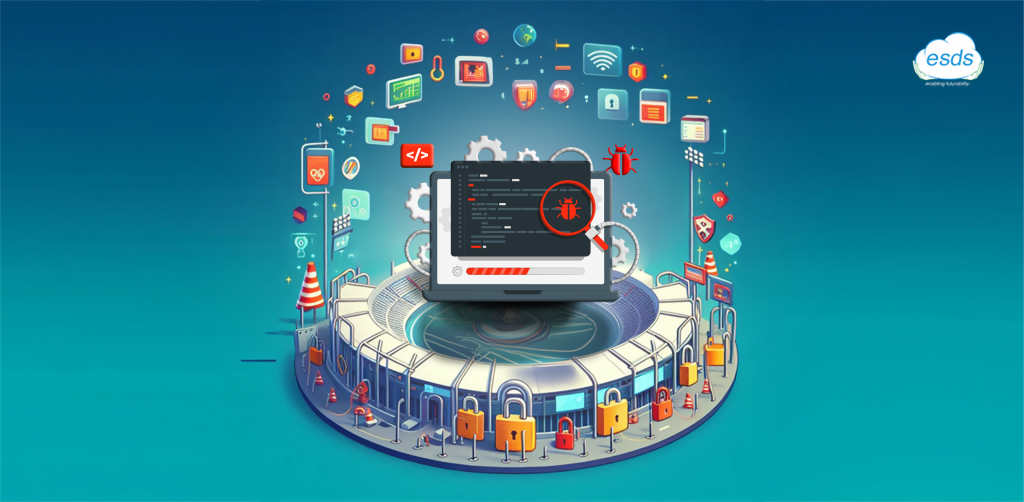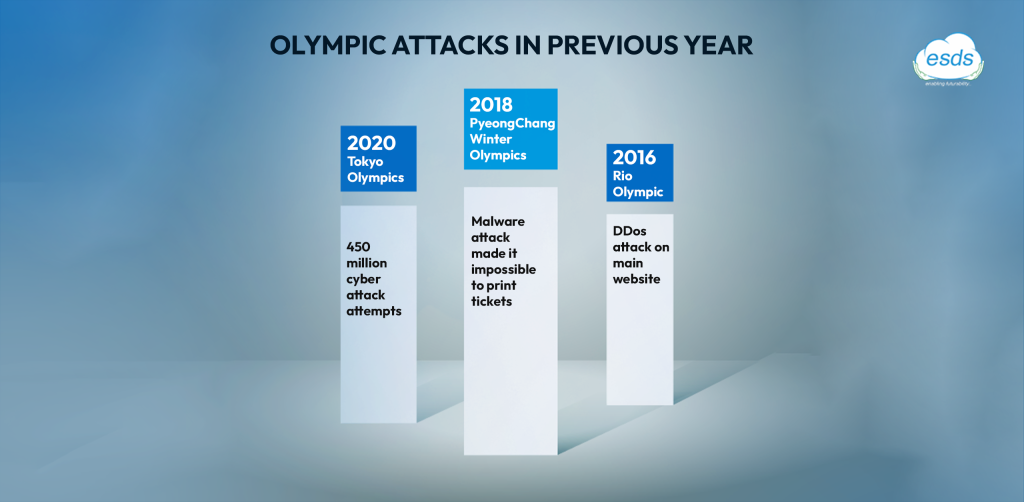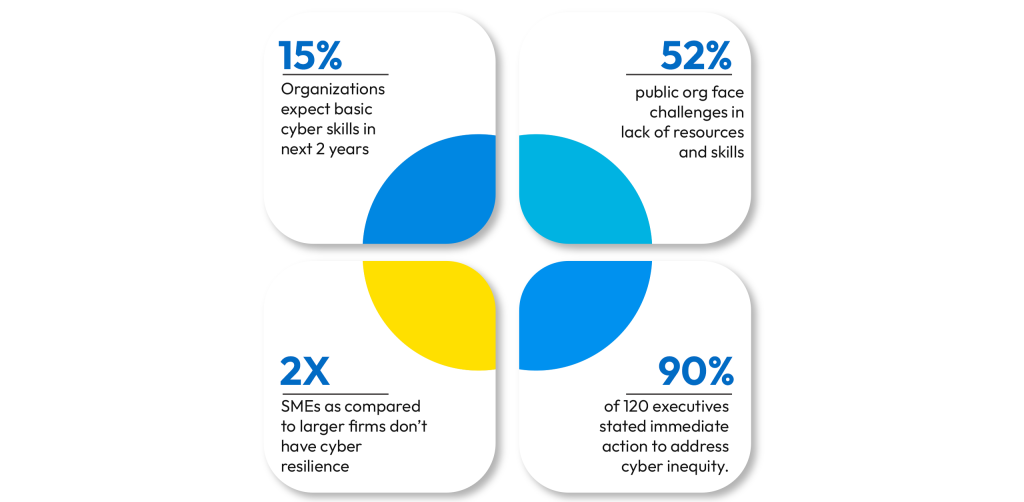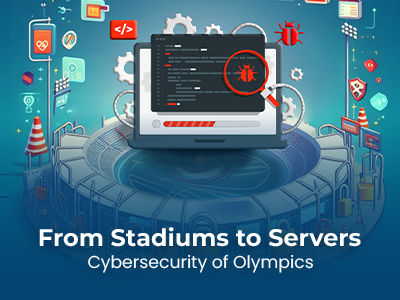From Stadiums to Servers: Cybersecurity in Olympics

The Olympic Games have long been the target of cyberattacks. The global technology firm Cisco predicts 450 million cyberattacks during the 2021 Tokyo Olympics. As an official partner of Paris 2024, the company expects eight times as many cyberattacks during the Paris Games.
With everyone looking forward to Paris in 2024 for the Olympic Games, technology is expected to be more critical than ever. Modern AI and technological advancements will be used at this year’s Games. They will bring fans high and unique experiences while disrupting the sports world.
However, huge technical progress also brings higher risks. Cybersecurity experts warn that cyber threats to the Olympics in Paris could be even greater than in past years.
Past Olympic cyber threats:

- 2020 Tokyo Olympics: Security teams have documented 450 million attempts at cyberattacks, including ransomware, 5G network attacks, phishing, email spoofing, phishing, fake websites, and malware. The volume compared to the 2012 London Olympics was 2.5 times more.
- 2018 Pyeong Chang Winter Olympics: A malware attack seriously affected the Organizing Committee’s website, broadcasts, drones, and internet access. As a result, many seats remained empty, as guests were unable to print their tickets or attend activities.
- 2016 Rio Olympics: A prolonged DDoS attack was launched on the main website and related entities. Another hacker gang, “Fancy Bear,” from Russia, gained access to and released athlete medical records via phishing attacks.
Forms of cyber threats in the Olympics
Cyberattacks can occur in different ways. For example, phishing schemes involve attackers using fraudulent emails or messages to gain personal data, including credit card details or login passwords. Spoofing schemes involve criminals using online personas to carry out dangerous cyberattacks. Phishing scams also aim to install malware.
Various malign activities, including DDoS attacks, disturb the normal flow of internet traffic by bombarding a target server or network with all forms of malware. In this regard, experts suggest that various advanced methodologies are enhancing scammers’ capability.
The massive volume of sensitive data required to organize the Games presents a huge financial opportunity for hackers. This data involves, among other things, information about the persons concerned, particularly athletes, the financial transactions involved, and the related infrastructure.
Cybercriminals are prone to targeting event-related digital infrastructure, such as scoring, ticketing, and event administration platforms. They also target broadcast networks, online streaming services, and fan engagement channels to capture sensitive information or cause disruption.
5 key cybersecurity measures for the 2024 Olympics
In particular, the Paris 2024 Olympics are taking relevant measures to protect it from cyber threats five years in advance. In cooperation with ANSSI and many cybersecurity vendors, they anticipate a tenfold increase compared to the Tokyo 2020 edition. The following are the main strategies being used:
- Identity protection: The integrity of digital identities and access controls is crucial for maintaining the security of the Olympic infrastructure and guarding against cyberattacks.
- Proactive planning: Like athletes, security teams train extensively beforehand, using ethical hacking and preventative testing to assess vulnerabilities.
- Least privileged: No user gets more access than is needed. This limits the attack surface and minimizes the risk of excess privileges.
- Controlled access: Based on the zero-trust concept, robust authentication and access control mechanisms ensure that only authenticated workers can access critical systems.
- Cloud and hybrid security: Privilege Management and Access Control across the environment enforce broad infrastructure protection on-premises and in the cloud.
Organizations can learn a lot from how cybersecurity strategies protected the 2024 Olympics’ data and operations.
Key statistics on cyber-attacks at the organizational level
Here are a few essential statistics on organizational cyber-attacks that require a focus to be alerted.

- Only 15% of organizations expect improvements in primary cyber skills and education in the next two years.
- Regarding designing for cyber resilience, 52% of public organizations report that the most critical challenge is a lack of resources and skills.
- More than twice as many SMEs compared with large firms say they lack the level of cyber resilience needed to achieve their core operational requirements.
At the World Economic Forum’s Annual Meeting on Cybersecurity, 120 executives participated in a survey, and 90% of them stated that immediate action is needed to address this growing cyber inequity.
Key cybersecurity measures to ensure organizational resilience
Ethical hacking and security assessments should be regular exercises in an organization. They are also necessary for continuous growth. As much preparation is needed to protect from such threats, much weight should be given to identity security and the integrity of the Olympic infrastructure.
In this case, organizations should implement strong identity management to protect critical assets. Proper monitoring and authentication are also important. The organizations would reduce cyber-attacks and insider threats with such measures in place.
While this may sound like organizational security, it works on the principle of least privilege, wherein the attack surface is reduced by giving users only the least required access. Robust mechanisms of access control, zero-trust protocols, and multifactor authentication are in place to restrict access to critical systems and allow only those authorized to do so.
In such a case, a full-fledged strategy on cloud and on-premises infrastructure security is required to control access and manage rights throughout the environment. These essential cybersecurity measures will encourage an organization toward a sound framework. This approach ensures operational continuity while minimizing risks, comparable to the strict Olympic security protocols.
Wrapping up with an ideal solution for cyberattacks
With everybody’s attention focused on the Paris Olympics, the scope of any cybersecurity incident is more significant than ever. With growing quantity and complexity, cyberattack vectors raise the potential for disruption. At the same time, everybody associated with the Games must be vigilant against new risks and take instant measures to eliminate or neutralize them. These apply to all spectators and organizations involved. They also need to improve their defense mechanisms.
The games remind us that with practice, dedication, and determination, we can drive ourselves further up the scale to the best version of ourselves.
ESDS can help you with the growing dangers to the Olympics and your organization. ESDS managed security services provide all the security-related solutions, even if you are unsure where to start when enhancing your managed security. They guarantee you can always concentrate on your business by offering peace of mind.
We have developed privileged access management through decades of experience protecting and managing privileges. Our goal is to assist you in identifying identities, risks, and privileges within your organization. We also help you create a proactive training plan to reduce the surface area of your identity fraud.
If you want to learn more or book a free consultation, visit the ESDS website.
- Why no backup plans even after repeated global IT failures? - February 25, 2025
- Can BFSI community cloud solve data security challenges in banks? - February 3, 2025
- How to Assess SOC-as-a-Service Factors, Benefits, and Challenges? - January 7, 2025
